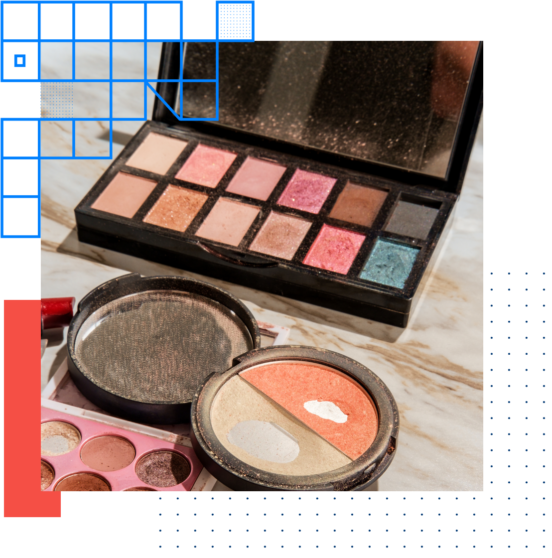Stay compliant with Registrar Corp’s FDA color additives services.
Avoid wasting countless hours researching FDA’s extensive color additive requirements and get expert guidance on which regulations apply to your products. Registrar Corp is here to do the heavy lifting for you.


Color Additive Review and Batch Certification
A color additive is any dye, pigment, or other substance that can impart color to a product. FDA regulates color additives added to food, supplements, drugs, cosmetics, and medical devices, including both synthetic substances and substances derived from natural sources.
Color additives must undergo FDA’s approval process before being used in products regulated by the agency. FDA may take enforcement action against a firm distributing products containing an unapproved color or one used in a manner not described in regulation.
These actions may include warning letters, placement of the company on import alert, or detention and refusal of the product in port.
For some synthetic color additives, approval for use is contingent upon successful completion of “batch certification.” Non-U.S. companies are required to designate a U.S. Agent for this process.
During the batch certification process, the manufacturer:
- Retrieves a sample of the color additive
- Sends the sample to FDA
- Pays a fee for FDA to test the sample according to the specifications described in regulation
- Gets a unique lot number if the color passes
Navigating the confusing requirements for each of your color additives is challenging and time consuming. How do you know whether a color additive needs batch certification, doesn’t need it, or isn’t allowed at all?

Registrar Corp can help.
We’ll simplify color additive regulations by cross-referencing your color against thousands of pages within the Code of Federal Regulations as well as the Federal Register, Substances Added to Food Database, Labeling Guides, and Warning Letters issued by U.S. FDA.
Registrar Corp can review your color additives to determine if they have been approved by FDA. Our report will detail all of the approved uses and specifications required for your color additives.
If your color additive is subject to the batch certification requirement, we’ll:

Help you obtain an FDA account and log into the online system
Assist you with the submission of samples
Serve as your communications contact and (if applicable) U.S. Agent
Registrar Corp helps simplify color additive regulations.
Frequently Asked Questions
All color additives must be approved by FDA for their intended use. Once approved, FDA announces a regulation for the specific color additive, which is found in Title 21 of the Code of Federal Regulations.
Some colors are approved generally, while others will have very specific approved uses or limitations on their use. For example, beta carotene may be used in foods generally, but spirulina extract may only be used in certain product categories.
In addition, some color additives require “batch certification” before they can be added to a finished product, where FDA tests a sample from each manufactured batch to ensure that it meets their specifications. These colors, once certified, are designated with “FD&C” or “D&C” in the name.
Certification involves strict rules regarding manufacturing and then “controlling” the batch so that no adulteration occurs while FDA tests the sample. The labeling of the color additive itself is also subject to specific content requirements. Any violation can result in FDA rejecting the batch and refusing to certify.
Companies must be very careful to ensure that their colors are approved for use in the U.S. as this is an extremely common cause for shipment detentions. Companies must also be prepared to prove that any certifiable colors used in their products are sourced from FDA-certified batches with the exact lot number.
FDA charges fees based upon the size of the batch being certified. For straight colors and lakes, the fee is $0.35 per pound, but no less than $224. For repacks of previously certified color additives, the fee varies: batches 100 pounds or less, $35; batches greater than 100 pounds up to 1000 pounds, $35 plus $0.06 for every pound over 100 pounds; and for batches greater than 1000 pounds, $89 plus $0.02 for every pound over 1000 pounds.
On November 2, 2022, FDA proposed an increase in color batch certification fees to cover increased costs of operating the program. To date, this proposed increase has not been finalized.
In order to certify colors with FDA, a company must establish a Color Additive Account with FDA. Non-U.S. companies must also designate a U.S. Agent who will “accept responsibility” for any samples submitted for certification.
Once the Color Additive Account is established, a company will be granted access to the FDA’s online system though which batch certification requests can be submitted. To use the online system, the fees for certification must be sent to FDA and attributed to the Color Additive Account.
Once the fees are received, a company may submit requests and send the samples to FDA for testing. The U.S. Agent also uses the online system to accept responsibility for the samples. FDA will post the results of the testing in the system and follow up by mail with paper certificates for the batches.
Many color additives used worldwide are subject to batch certification by FDA. It is very common for companies sending products with these colors to the U.S. to experience detained shipments and entry refusal when they cannot prove that the products were made with certified colors.
For example, Allura Red, Tartrazine, and Sunset Yellow must be certified as FD&C Red 40, FD&C Yellow No. 5, and FD&C Yellow No. 6.
A straight color or lake sample must be 4 ounces. A repack or mixture sample must be 2 ounces. FDA prefers that companies use specific containers the agency sends to the company when the Color Additive Account is established. Failure to use FDA’s containers can delay the process or result in the sample’s rejection.
FDA regulations require that your batch be kept under tight control pending certification. It must be stored in containers that will prevent a change in composition and held under the control of the person requesting certification.
Samples must be marked so that it is clear it is not to be used until certification is complete. FDA has refused to certify color additives in cases where the agency has reason to believe they are not being held under the requestor’s control.
After certification is complete, the batch must be kept to maintain its proper composition until used in a food, drug, or cosmetic.
If a batch passes and is certified, FDA will assign the batch a unique lot number. This number should be added to the labeling and referenced if FDA asks for proof of certification.
Any company purchasing a certifiable color additive for use in a finished product destined for the U.S. market should ensure that they are provided the unique lot number in the event that FDA requests it upon inspection in port.



